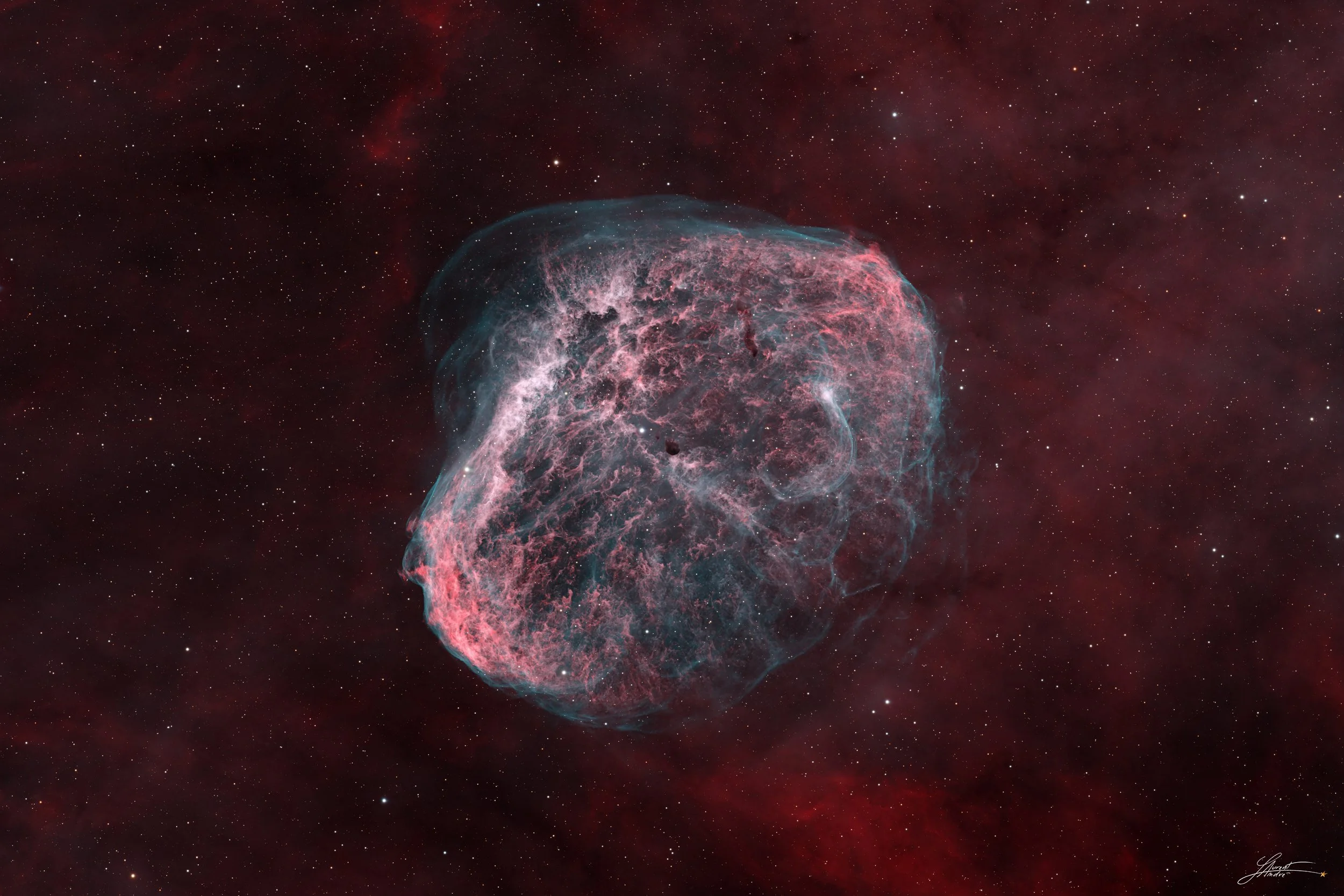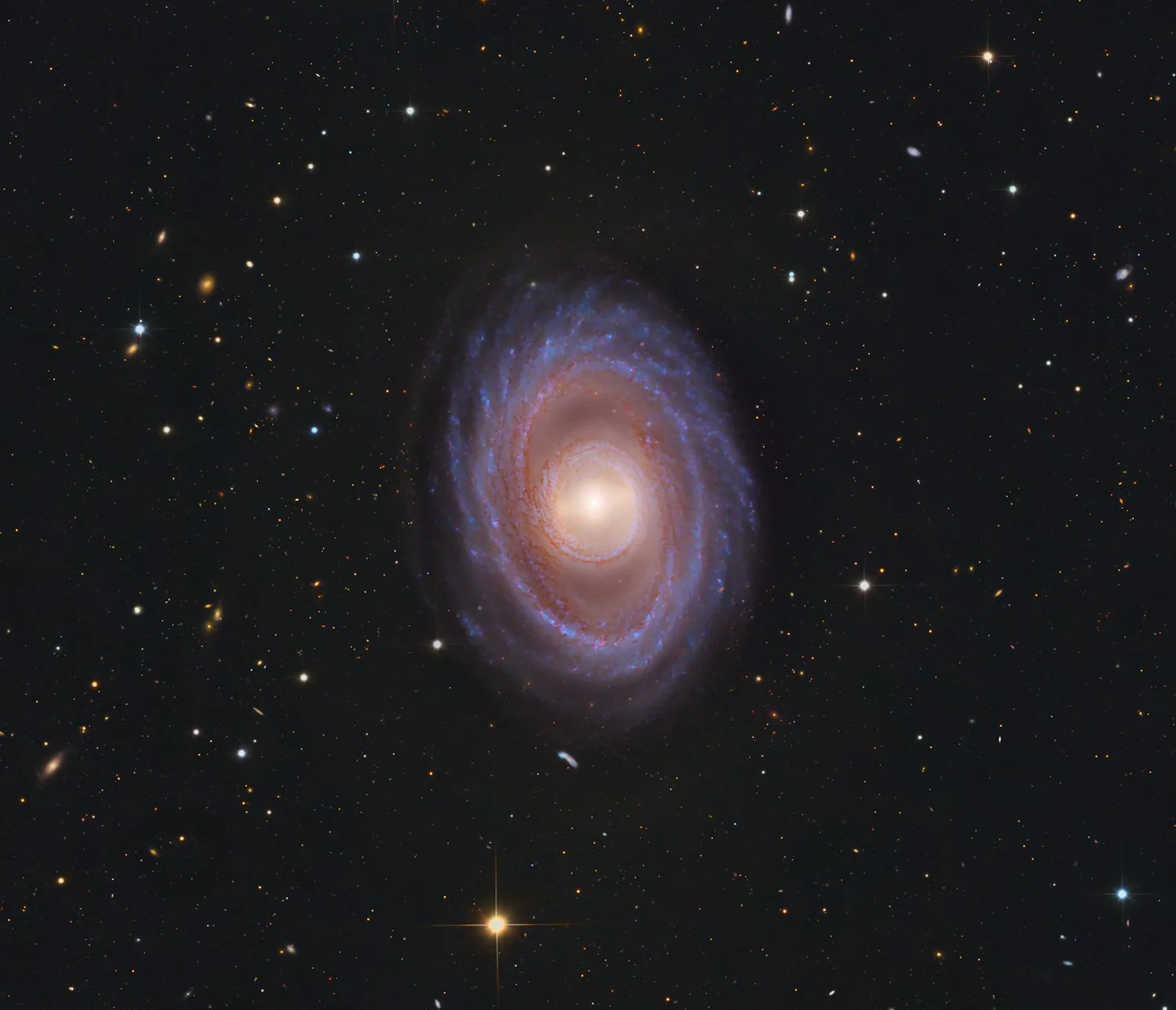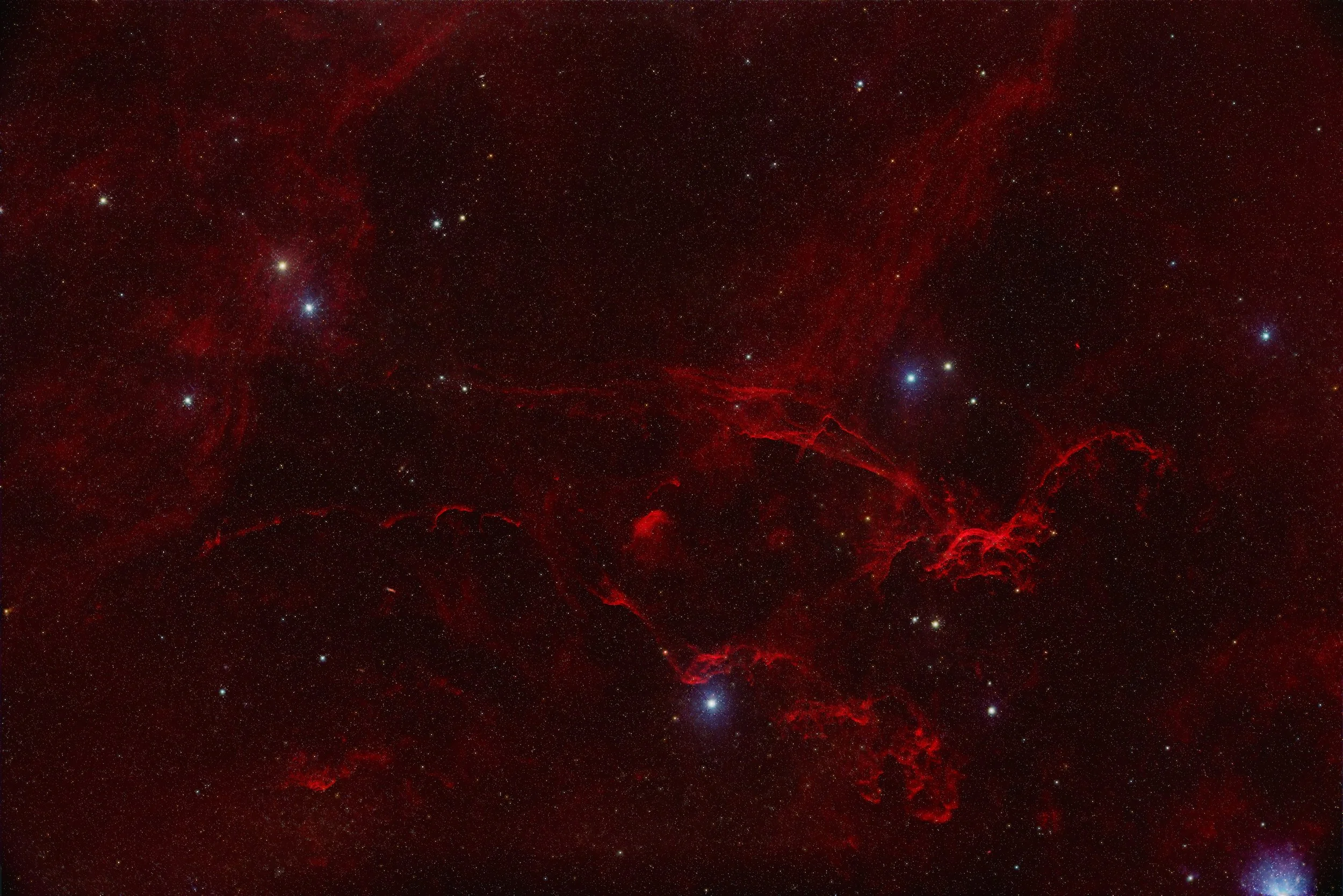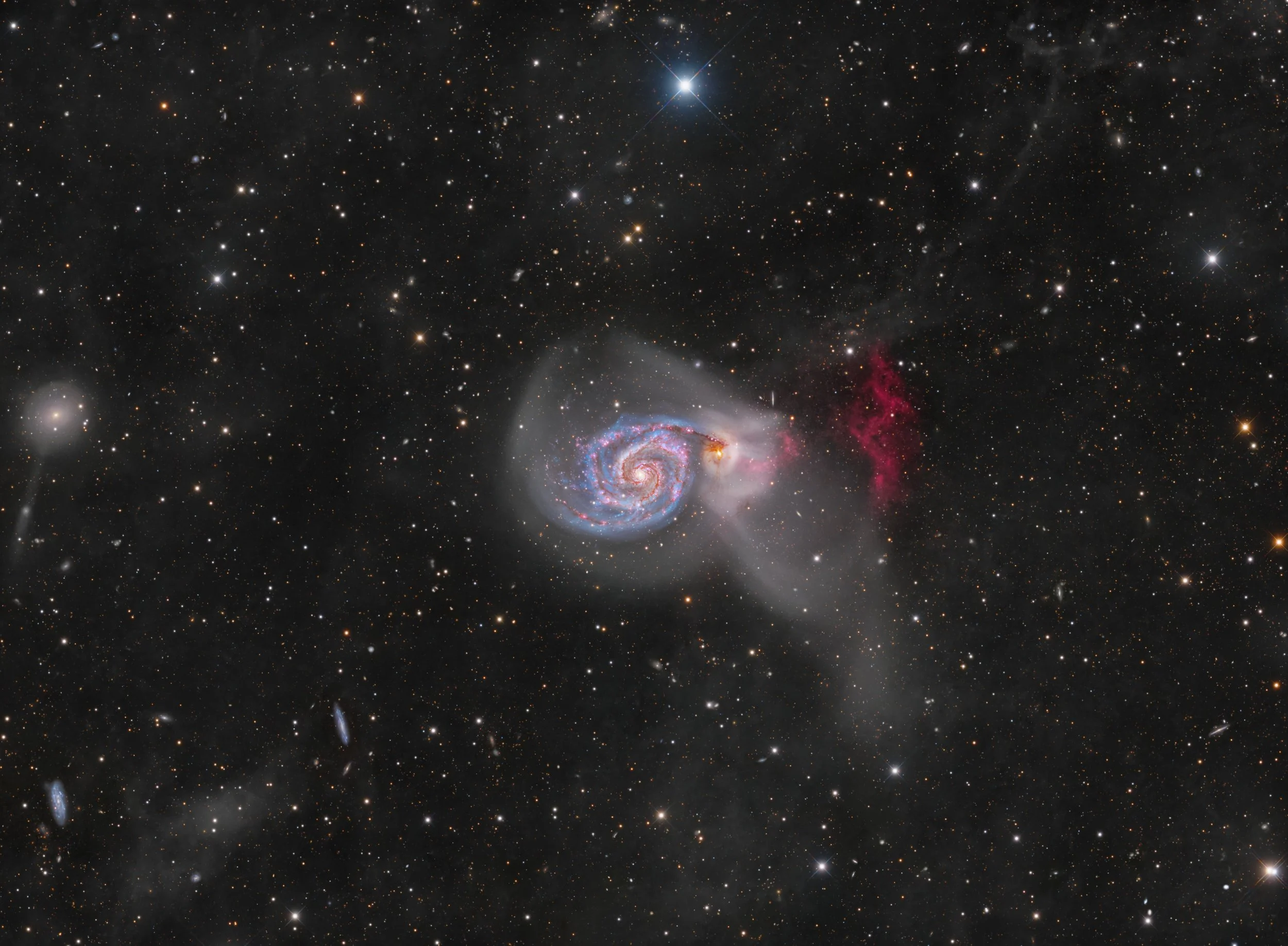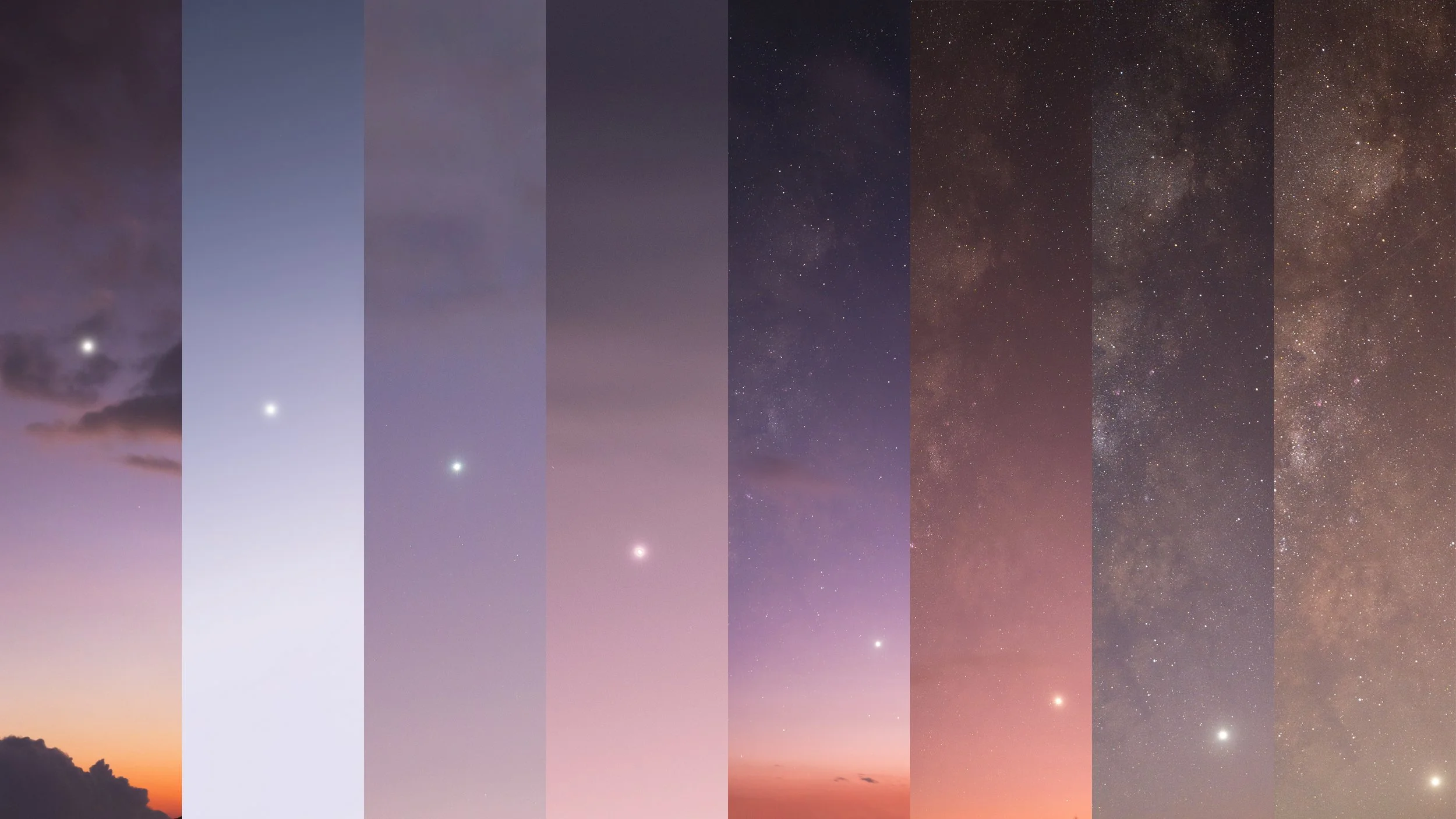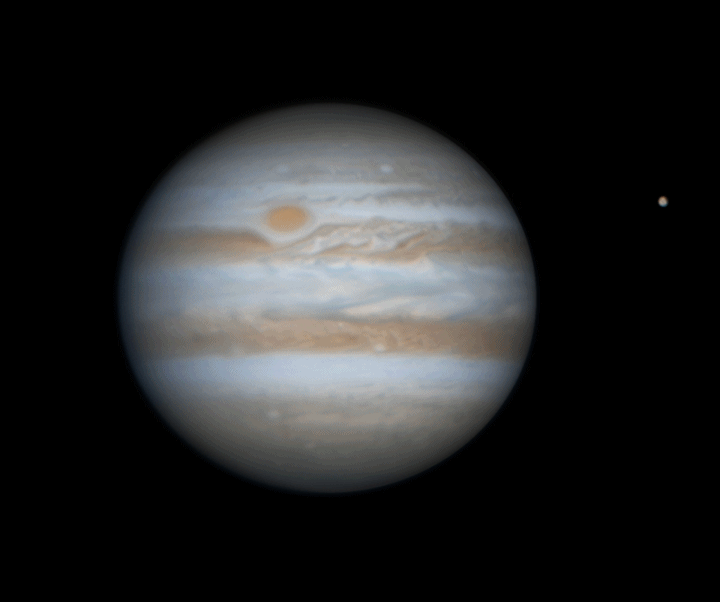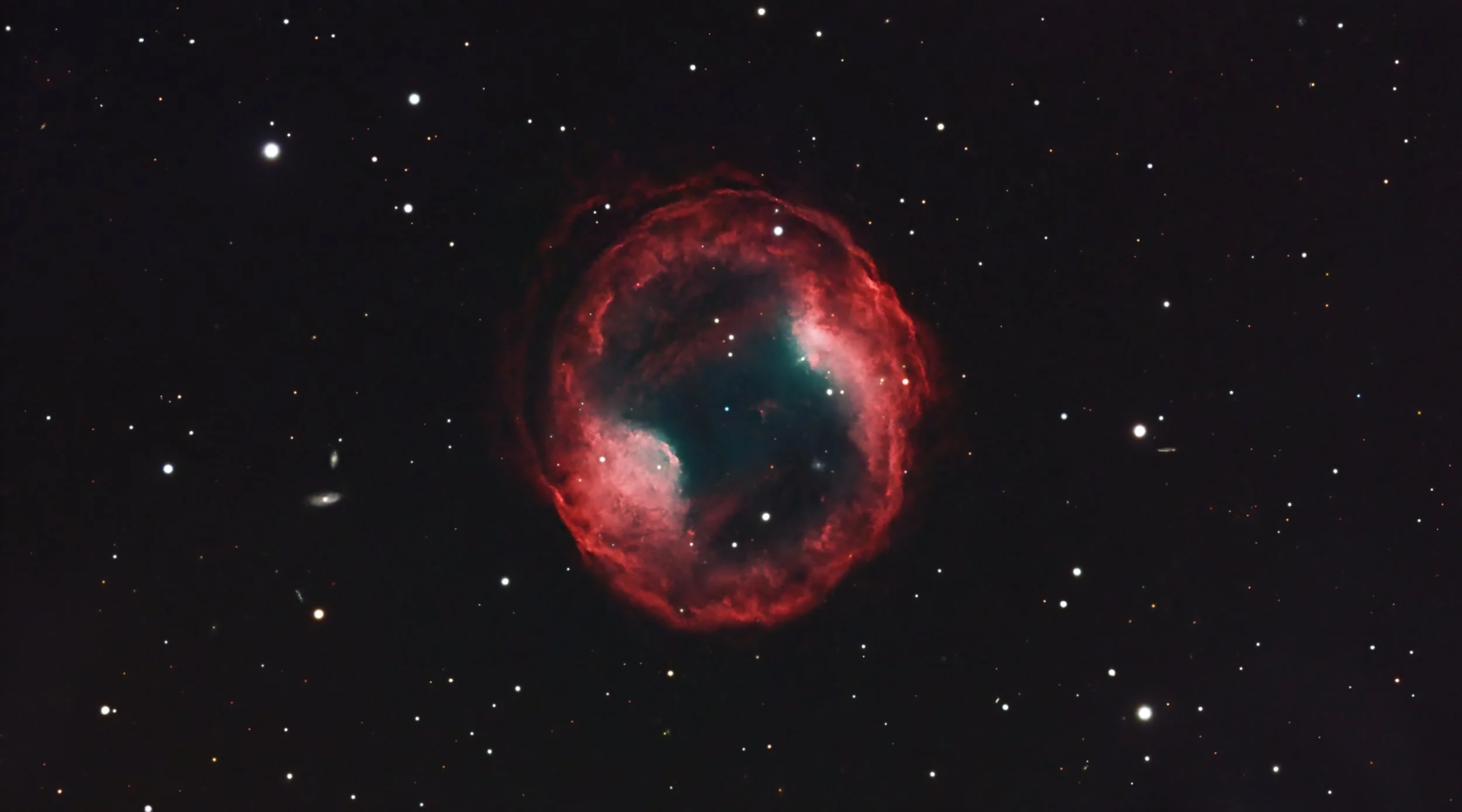
AAPOD2 Image Archives
NGC6888 -The Crescent Nebula
Lighting up the constellation Cygnus, the Crescent Nebula (NGC 6888) shines like cosmic fireworks, a fitting farewell to the year that was. This glowing arc of gas and dust is the product of a massive Wolf-Rayet star nearing the end of its life. Intense stellar winds collide with material shed from the star’s earlier phases, sculpting this vibrant and dynamic structure.
Its fiery hues and intricate filaments mirror the brilliance of a midnight celebration, where endings and beginnings collide in a dazzling display. Spanning about 25 light-years, the Crescent Nebula serves as a reminder that even as one chapter closes, the universe is always creating something new and beautiful.
From all of us at AAPOD2, Happy New Year to our amazing members! May the year ahead be filled with clear skies, stunning captures, and endless wonder. 🌌✨
WR 134 region
In the constellation Cygnus, the brilliant Wolf-Rayet star WR 134 casts its influence across the cosmos, sculpting a stunning bubble of ionized gas that glows like a delicate cosmic wreath. This celestial feature is a powerful testament to the dynamic life cycles of massive stars.
The nebula’s faint yet intricate arcs, shaped by intense stellar winds, symbolize the beauty of transformation and renewal—an ideal image to ring in the new year. WR 134 serves as a reminder that even the most tumultuous forces can create breathtaking works of art in the universe, echoing themes of resilience and the promise of fresh beginnings.
As the new year dawns, this cosmic masterpiece invites us to marvel at the wonders of change and embrace the possibilities that lie ahead, just as the stars shape and reshape the cosmos around them.
Sh2-240 The Spaghetti Nebula
Stretching across the constellation Taurus, Sh2-240, also known as the Spaghetti Nebula, is a breathtaking remnant of a supernova explosion that occurred over 40,000 years ago. Its intricate, filamentary structure weaves a delicate tapestry of gas and dust, glowing faintly as it expands through the void.
The Spaghetti Nebula is a fitting symbol for New Year's Day, representing the passage of time and the interconnected nature of the universe. Its soft, ethereal tendrils remind us that even in the aftermath of explosive endings, beauty and transformation can emerge, weaving together the threads of the past and the promise of the future.
As we gaze at this cosmic masterpiece, it inspires us to reflect on our own journey through time and look forward to the new paths that await in the year ahead.
IC1848 Soul Nebula
Radiating with celestial energy, the Soul Nebula (IC 1848) shines brilliantly in the constellation Cassiopeia. This sprawling emission nebula, captured in the iconic SHO (Hubble) palette—where sulfur, hydrogen, and oxygen are mapped to striking gold, green, and blue hues—highlights the intricate details of this stellar nursery.
Made famous by the Hubble imaging team, the nebula’s vivid colors and textures resemble a beating heart, earning it the soulful moniker. Within its glowing depths, massive clouds of ionized gas fuel the birth of new stars, while darker regions of dust weave delicate shadows across the cosmic canvas.
The Soul Nebula is more than a celestial landmark; it’s a testament to the creative forces of the universe, showcasing the beauty and life hidden within the vastness of space.
NGC 1333, Barnard 203, Barnard 204: A dusty view of Perseus
Deep in the constellation Perseus, a cosmic tableau unfolds, featuring the star-forming region NGC 1333 and the dark nebulae Barnard 203 and Barnard 204. This stunning view is dominated by rich, dusty filaments that weave through the scene, creating a stark contrast against the faint glow of scattered starlight.
NGC 1333, nestled to the left, teems with youthful stars hidden within veils of gas and dust, their energetic outflows sculpting the surrounding material. Meanwhile, Barnard 203 and 204 cast inky shadows across the image, standing as quiet sentinels in this dynamic environment.
Together, these structures offer a breathtaking glimpse into the interplay of light and shadow, showcasing the raw materials of star formation and the intricate beauty of the cosmos.
The Seven Sisters
Rising high on Christmas Day, the Pleiades star cluster (M45), known as the Seven Sisters, graces the heavens with a festive glow. In this image, the cluster is framed vertically, resembling a sparkling celestial Christmas tree. The bright blue stars, adorned with wisps of reflection nebulae, form a striking "ornamented" structure against the dark backdrop of space, as if dusted with cosmic snow.
This seasonal alignment invites us to look skyward and reflect on the beauty and wonder of the universe. Much like the spirit of the holidays, the Pleiades reminds us of connection and light, shining brightly as a timeless symbol of hope and renewal.
SH2-278
Nestled in the constellation Orion, SH2-278 is a captivating emission nebula that tells a story of star birth and interstellar artistry. The nebula is dominated by glowing hydrogen-alpha emissions, painting vibrant red hues across the region. Complementing this are stunning blue regions, indicative of reflection nebulae—dust clouds illuminated by the scattered light of nearby stars.
In the left center of the image, delicate structures known as Herbig-Haro objects make an appearance. These rare features are formed when streams of ionized gas from newborn stars collide with surrounding clouds of gas and dust, creating intricate, luminous jets. SH2-278 is a testament to the dynamic processes shaping the cosmos, offering a glimpse into the beauty and complexity of our universe.
Orion's Belt
The Orion's Belt is formed by the three bright stars Alnitak, Alnilam, and Mintaka, aligned in a nearly straight line within the constellation Orion, about 1,300 light-years from Earth. These stars are massive blue supergiants, each much larger and hotter than the Sun, shining brightly due to their intense luminosity and surface temperatures.
In a wide-field image of the belt, you can also observe surrounding interstellar material, such as the Flame Nebula near Alnitak and the Horsehead Nebula, a dark silhouette against a glowing background of hydrogen gas. The region is part of the Orion Molecular Cloud Complex, a massive star-forming area rich with gas and dust. The alignment and brightness of these three stars have made Orion's Belt a key feature for stargazers across cultures throughout history.
SH2-308 Dolphin Head Nebula
The Dolphin's Head Nebula (Sh2-308) is an emission nebula located in the constellation Canis Major, approximately 4,500 light-years away. This bubble-shaped nebula is created by the strong stellar winds from the Wolf-Rayet star EZ Canis Majoris (WR 6), a massive, dying star in the final stages of its life.
The nebula spans about 60 light-years across, with its faint glow originating from ionized hydrogen gas illuminated by the ultraviolet radiation of the central star. Sh2-308 is an example of a Wolf-Rayet bubble, a structure formed when stellar winds sweep up the surrounding material. It is a fleeting structure in astronomical terms, lasting only a few hundred thousand years before dissipating into space.
The Dreyer's Nebula Complex
Dreyer's Nebula (IC 447) is a striking reflection nebula located in the constellation Monoceros, about 3,000 light-years away. It forms one end of the Monoceros R1 star-forming filament, with IC 446 at the opposite end. IC 447 reflects the light of nearby young, hot stars embedded in the surrounding dust, causing its characteristic blue glow.
Nearby, NGC 2245 and NGC 2247, two additional reflection nebulae, are part of this complex region of active star formation. On the right side of the image lies the edge of an extended hydrogen emission region associated with the Cone Nebula and Christmas Tree Cluster, highlighting the dynamic interactions between gas, dust, and young stellar populations in this vibrant stellar nursery.
NGC 1398 - A Spiral Beauty in Fornax
NGC 1398, a stunning barred spiral galaxy located in the constellation Fornax, lies approximately 65 million light-years from Earth. Its defining features include a prominent bar structure and tightly wound spiral arms, creating a breathtaking cosmic masterpiece.
This galaxy is a true gem of the night sky, showcasing a wealth of intricate details that challenge even the most experienced astrophotographers. With this image, I aimed to capture those details with precision, revealing the beauty and complexity of this distant treasure.
The Flying Dragons - Sh2-114, LBN347 (Ha-RGB)
The image of Sh2-114, (and 113) known as the "Flying Dragon Nebula," is a stunning example of cosmic artistry. The intricate red filaments of ionized hydrogen stretch across the field, resembling the fiery wings of a mythical dragon. The interplay of glowing red nebular gas against the dark, star-filled background creates a sense of depth, highlighting the delicate, web-like structures sculpted by stellar winds and magnetic fields.
Astronomically, Sh2-114 is a Sharpless catalog emission nebula located in the constellation Cygnus. Its fiery hues stem from hydrogen atoms energized by ultraviolet radiation from nearby stars. This nebula’s complexity reflects the dynamic forces at play, and the only emission from these nebulae is in Ha frequency (check this link for a comprehensive explanation) and so is the "clouds" around the objects.
Directly above the right wing, halfway between the wing and the edge of the frame, is a planetary nebula. This is cataloged as Kronberger (Kn26), and it is a bipolar emission nebula. Kn26 is a small (110 arc seconds) planetary nebula in the constellation Cygnus. Kn26 was discovered by Austrian amateur astronomer Matthias Kronberger in 2006, although it wasn't spectroscopically confirmed as a planetary nebula until 2011. In 2012 it was established that it was a new member of the very small sub-class of quadupolar planetary nebulae.The image of Sh2-114, (and 113) known as the "Flying Dragon Nebula," is a stunning example of cosmic artistry. The intricate red filaments of ionized hydrogen stretch across the field, resembling the fiery wings of a mythical dragon. The interplay of glowing red nebular gas against the dark, star-filled background creates a sense of depth, highlighting the delicate, web-like structures sculpted by stellar winds and magnetic fields.
Astronomically, Sh2-114 is a Sharpless catalog emission nebula located in the constellation Cygnus. Its fiery hues stem from hydrogen atoms energized by ultraviolet radiation from nearby stars. This nebula’s complexity reflects the dynamic forces at play, and the only emission from these nebulae is in Ha frequency (check this link for a comprehensive explanation) and so is the "clouds" around the objects.
Directly above the right wing, halfway between the wing and the edge of the frame, is a planetary nebula. This is cataloged as Kronberger (Kn26), and it is a bipolar emission nebula. Kn26 is a small (110 arc seconds) planetary nebula in the constellation Cygnus. Kn26 was discovered by Austrian amateur astronomer Matthias Kronberger in 2006, although it wasn't spectroscopically confirmed as a planetary nebula until 2011. In 2012 it was established that it was a new member of the very small sub-class of quadupolar planetary nebulae.
Revisiting an old friend - M51 and its Ha cliffs
The Whirlpool Galaxy, also known as Messier 51 (M51), is a striking galaxy located in the constellation Canes Venatici. Situated approximately 23 million light-years away, this cosmic wonder spans a staggering 80,000 light-years in diameter.
M51 is a favorite target among astrophotographers due to its iconic spiral arms, which were first discovered in 1845 by William Parsons, the 3rd Earl of Rosse. This discovery also marked the first time spiral arms were detected in any celestial object.
One of M51’s most fascinating features is the prominent hydrogen-alpha (Hα) region near the galaxy, commonly referred to as the "Hα Cliffs." Capturing this faint structure poses a significant challenge, requiring exceptional dedication and skill. To fully unveil the cliffs, our team accumulated an incredible 383 hours of Hα data, with individual exposures averaging 1,300 seconds each.
The result is a breathtaking view that highlights not only M51’s distinctive spiral structure but also the delicate, glowing Hα regions that surround it.
Venus through Twilight Colors
The transition from twilight to night is depicted, spanning approximately 26 minutes at this latitude.
This image is a combination of photographs taken over three days—October 30, October 31, and November 2.
Jupiter rotation
Watching the planets rotate is always a captivating experience, but with Jupiter, it becomes truly spectacular. The largest planet in our Solar System completes a full rotation on its axis in just 10 hours, creating a mesmerizing display of motion. In this animation, we witness Jupiter's moon Europa passing in front of the gas giant, accompanied by the shadow it casts across the planet's swirling cloud tops. The striking 3D effect as Europa crosses Jupiter's face adds an incredible sense of depth and realism, making this celestial event even more awe-inspiring.
IC434 - Dusty Region around the Horse Head Nebula
This image highlights the Horsehead Nebula (Barnard 33) and its surrounding dusty region, set against the glowing backdrop of IC 434 in the constellation Orion.
The Horsehead Nebula, one of the most iconic dark nebulae in the night sky, is silhouetted against the bright hydrogen-alpha emissions of IC 434. Its distinctive shape is sculpted by powerful stellar winds and intense radiation from nearby stars, including Alnitak, the easternmost star of Orion’s Belt, which lies just outside the frame.
This dusty region is rich in interstellar material, with dark lanes of cold molecular gas and dust weaving through the glowing emission nebula. The complex interplay of light and shadow creates a dramatic and textured view of this stellar nursery, where new stars are forming deep within the clouds.
The region lies approximately 1,500 light-years away and spans a vast area of the Orion Molecular Cloud Complex. This detailed portrait captures the beauty of cosmic creation, offering a glimpse into the processes shaping our galaxy.
IC 410
This image captures IC 410, also known as the Tadpole Nebula, located in the constellation Auriga. A glowing region of ionized hydrogen, this emission nebula surrounds the open star cluster NGC 1893, a young cluster whose stars power the nebula's illumination.
The "tadpoles" themselves—two dense, dusty structures stretching roughly 10 light-years each—are regions of concentrated gas and dust, shaped by stellar winds and radiation. These structures are likely sites of ongoing star formation, hidden within their dense cocoons.
The image displays a rich palette of colors, showcasing hydrogen-alpha (red), oxygen (blue), and sulfur (gold) emissions, bringing out the intricate textures and dramatic interplay of light and shadow within the nebula.
IC 410 resides approximately 12,000 light-years away and spans about 100 light-years across. This vibrant celestial portrait reveals the complex dynamics of star formation and the incredible power of young, massive stars.
Jones-Emberson 1
Captured from a backyard observatory in Romano d’Ezzelino, Italy, under the light-polluted Bortle 7/8 skies, this image showcases Jones-Emberson 1 (PK 164+31.1), a faint planetary nebula located approximately 1,600 light-years away in the constellation Lynx. Nicknamed the "Headphone Nebula" due to its distinctive shape, this relic of a dying star’s outer layers appears as a delicate bubble of ionized gas, glowing faintly against the backdrop of space.
The nebula, around four light-years across, is a testament to the star's final stages of life. At its heart lies a fading white dwarf, the exposed core of the progenitor star that has shed its outer layers. The intricate structure and subtle colors in the nebula result from the interaction of ultraviolet radiation from the white dwarf with the surrounding gas, causing it to fluoresce in blues and greens, particularly in oxygen emission lines.
Imaging this elusive object from a bright suburban sky was a challenge, but careful planning and advanced post-processing brought its delicate features to life. Despite the light pollution, the faint circular shell and central star are clearly resolved, a testament to the dedication and skill of the astrophotographer.
Fun Fact: Jones-Emberson 1 was first cataloged in 1939 by R.C. Jones and R.A. Emberson. Unlike more famous planetary nebulae like the Ring or Dumbbell Nebula, it remains a lesser-known gem, often eluding amateur astronomers due to its low surface brightness.
Les fantômes de Cassiopée (The Ghosts of Cassiopeia)
The Ghosts of Cassiopeia, also known as IC 63, is a faint, ethereal nebula located approximately 550 light-years away in the constellation Cassiopeia. This nebula is illuminated and sculpted by the nearby blue supergiant star Gamma Cassiopeiae, which is a variable star more than 34,000 times as luminous as the Sun. The intense radiation from Gamma Cassiopeiae causes the hydrogen gas in the nebula to glow red, while its ultraviolet radiation sculpts and slowly erodes the nebula over time.
Interestingly, IC 63 is part of a larger complex of nebulosity surrounding Gamma Cassiopeiae, making it a fascinating target for both astrophotography and scientific study of star-forming regions.

